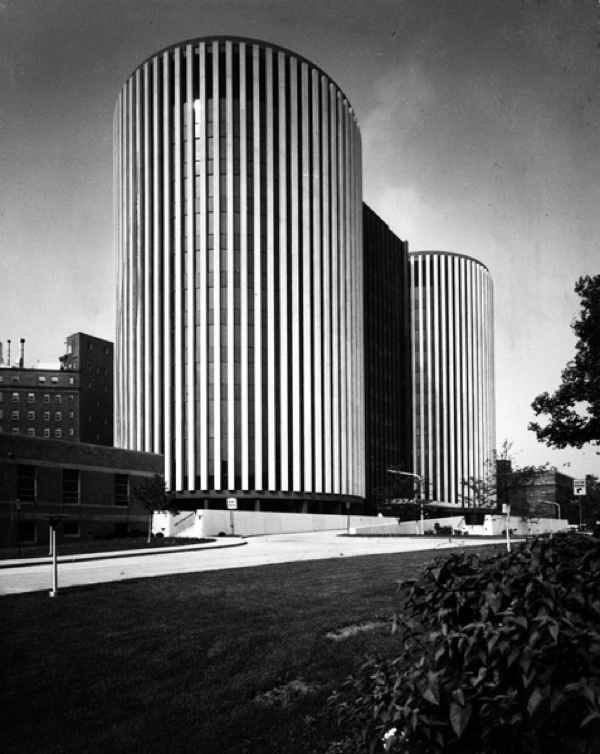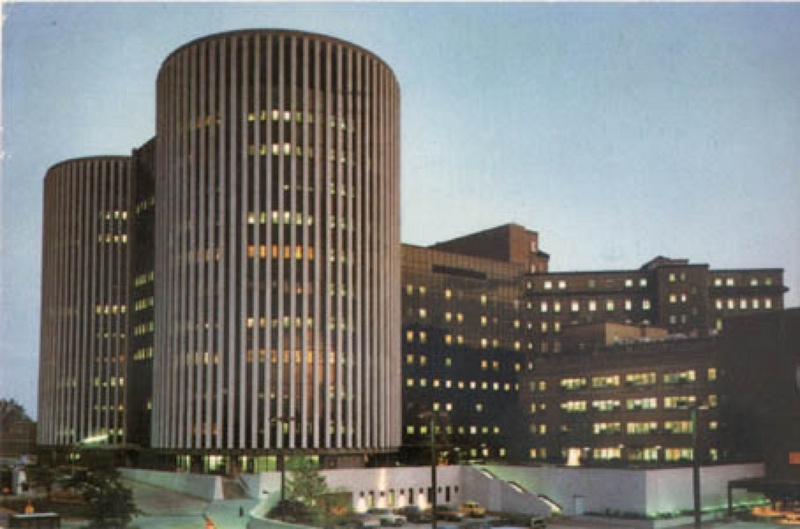
In 1958, City Hospital officially became Cleveland Metropolitan General, through a vote of the Cuyahoga County electorate to transfer the hospital from city to county control. As the newest addition to the County's growing portfolio of health, judicial, and transportation divisions, City Hospital was renamed Cleveland Metropolitan General to underscore the change from a city focus to a broader county role. This change reflected a trend in the 1950s towards increasing county control over city governance due to the redistribution of the population into the suburbs rather than the core city. The county takeover of Metro General also marked the beginning of the Cuyahoga County Hospital System. Today, the CCHS, now known as The MetroHealth System, is recognized as the nation's first public hospital system. Metro Health Medical Center is still the oldest and largest member of MetroHealth System, and is recognized nationally for its MetroLife Flight program and its Trauma and Burn unit. Serving as one of the busiest trauma centers in the nation and with more than 3,000 admissions annually, it is also the only Level 1 Trauma Center in the region.
The most iconic image of Metro Health Medical Center is without a doubt its Twin Towers, the structures whose nickname stemmed from the simultaneous construction of the World Trade Center's Twin Towers. The towers were built as a part of the county-initiated $40 million expansion undertaken at the campus on Scranton Road between 1962 and 1972, primarily funded through tax levies. The project included the construction of the towers--each a 12 story "hospital in the round." The reports on the towers at the time revolved around the benefits of the round construction of the towers, allowing for a central nurse's station in the corridor connecting the towers, and patient rooms forming a semi-circle on both sides. Each tower could hold 503 beds in total, with each floor accommodating 28 patients in semi-private rooms and private bathroom facilities. The towers also featured air conditioning, a pulmonary intensive care unit, and a burn treatment center. Showcased was the state-of-the art food delivery system, the "Cyberail" system of 'robot carts,' one of the first systems of its kind installed in the nation. The towers, more formally known as North Building, were built as part of the $40 million, ten year building project, costing $18.5 million themselves, over 46% of the total budget. This building plan was conceived in order to transform the campus into a modern and unique major medical center. The plan for the 'Twin Towers' embodied the hope of a nation in the future and acted as a stalwart of growth for a city experiencing troubled times.
Metro Health Medical Center has refocused its many programs and functions in response to the ever-changing demographics of its constituency, yet it continues to tie itself to the community and is the main source for affordable healthcare in the Cleveland area. The hospital-sponsored Community Health Centers stretch across Cuyahoga County from the east side of Cleveland to the west side, from the inner city out to its suburbs. Depending on the community in which they reside, the centers offer bilingual staff, pediatrics, geriatrics, WIC programs, safe sex education, and family planning services. Also important to the hospital's mission is school-based centers which deliver medicine to the people. Most importantly, the centers are formulated for no-cost or low-cost for patients who cannot pay, and are tailored to the community's needs. This is, and has always been, the niche for Metro Health Medical Center amongst the medical giants of Cleveland. It is the 'neighborhood' hospital and remains dedicated to providing medical care for all Cuyahoga County residents.
Images








